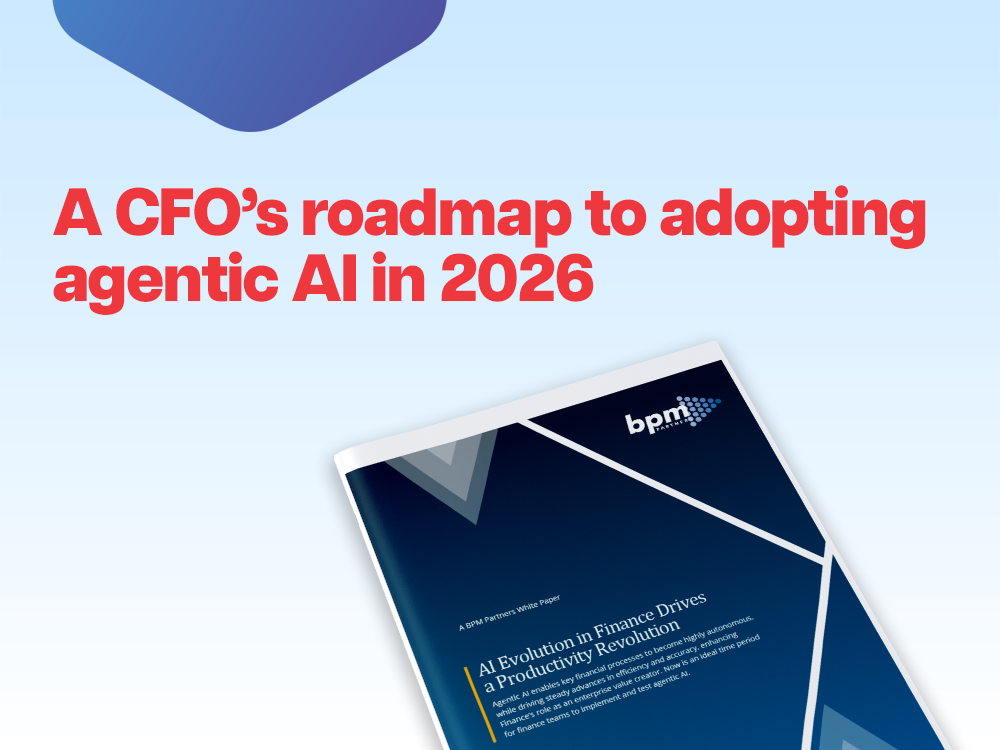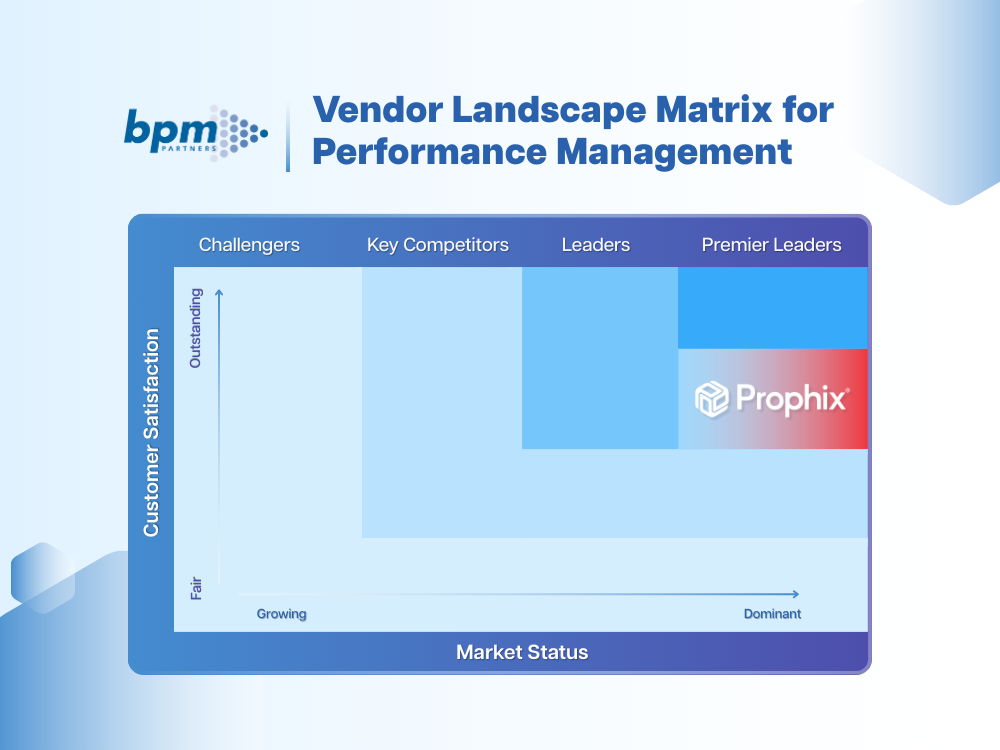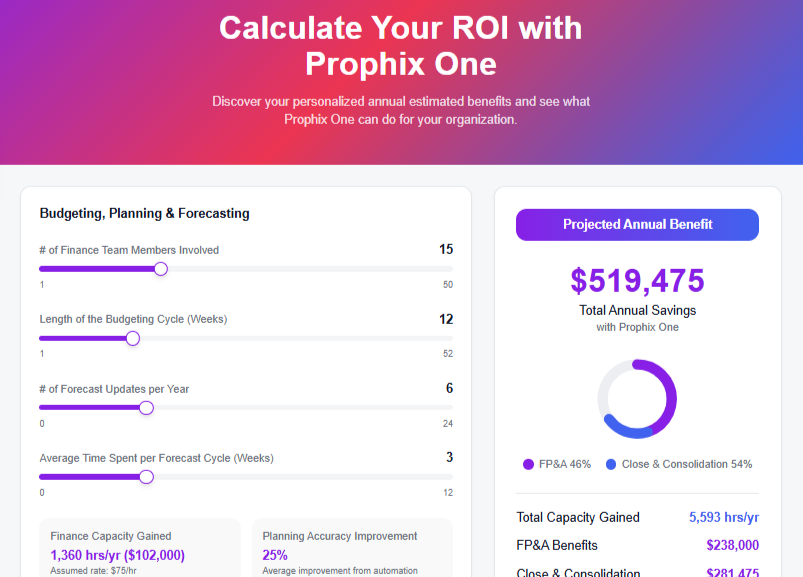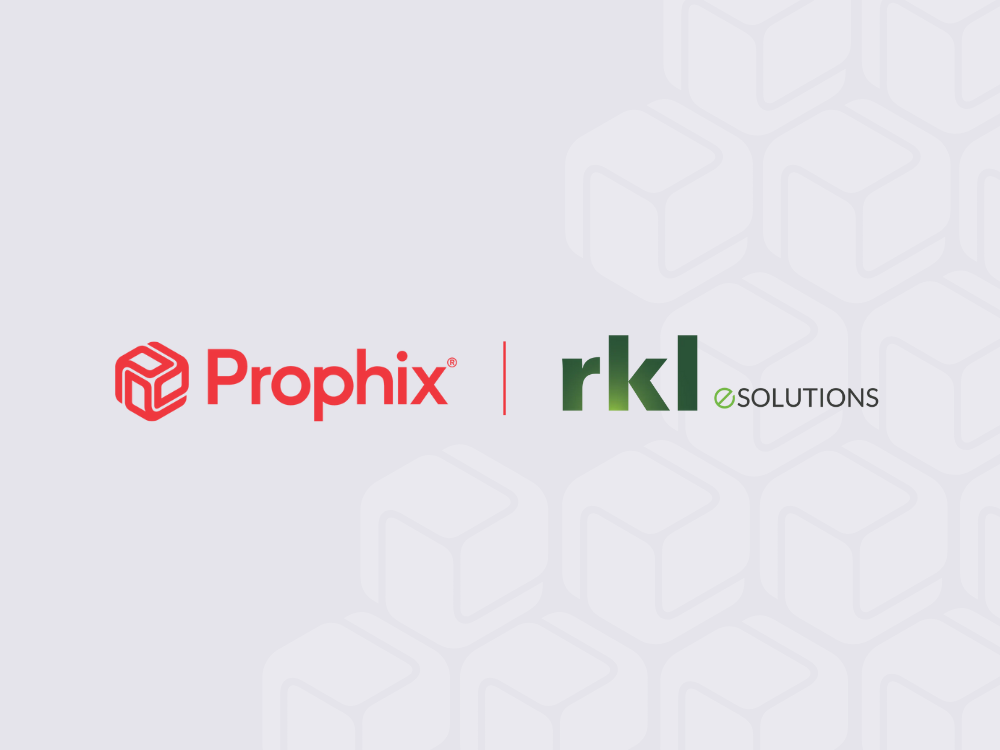Download Analyst Report
Cash flow management: 7 strategies for every CFO
In this article, we’ll cover what cash flow management is and why it’s important, the impact of poor cash flow management on businesses, and seven cash flow strategies for CFOs.
January 29, 2025A survey by Blackline found that nearly half (49%) of finance professionals worry about the reliability of their cash flow data, which can impact decision-making.
This underscores the importance of effective cash flow management in shaping a company’s financial strategy and goals. Without an accurate view of cash, companies cannot forecast effectively or optimize receivables.
With cash flow planning software, finance leaders can manage financial risks and gain real-time visibility into cash flows. Automating your cash flow processes enhances operational efficiency, saving time and resources while allowing finance teams to focus on strategic tasks.
In today’s article, we’ll cover what cash flow management is and why it’s important, the impact of poor cash flow management on businesses, and seven cash flow strategies for CFOs.
What is cash flow management and why is it important in finance strategy?
Cash flow management is the process of monitoring, optimizing, controlling, and planning for cash inflows and outflows to ensure a business’s liquidity and financial health. Done effectively, with the support of cash flow planning software, finance leaders can shift cash flow management from a reactive task to a proactive strategy that supports long-term business objectives.
For many CFOs, cash flow is a constant concern, as it directly impacts their ability to make strategic decisions that drive growth. Astute planning plays a vital role here, enabling finance leaders to anticipate potential cash flow challenges and address them proactively to maintain stability.
Free cash flow (FCF) is a critical metric in astute planning, measuring the cash a company generates after subtracting outflows tied to operations and capital assets. This metric is crucial for assessing a company’s ability to generate cash after maintaining or expanding its asset base, which is vital for investors and stakeholders. A surplus of long-term free cash flow allows CFOs to weather internal and external shifts while continuing to support sustainable business operations.
This is why balancing profitability and liquidity is essential to effective cash flow management, allowing businesses to make informed decisions about investments, debt management, and operational adjustments.
The impact of poor cash flow management on businesses
Poor cash flow management can leave businesses unnecessarily exposed to risk, such as being unable to pay vendors, halting capital investments, or, in a worst-case scenario, experiencing total operational failure.
Without accurate cash flow forecasting, CFOs often find themselves dependent on cash inflows, like customer payments, which can lead to liquidity issues, making it difficult for businesses to meet short-term obligations. Then, if one or more payments are delayed, it can quickly jeopardize an organization’s stability and negatively impact their reputation.
Some examples of how poor cash flow management can affect businesses include:
- For cyclical industries like real estate, poor cash flow management can leave businesses vulnerable to downturns, making it difficult to cover fixed costs during slow periods.
- Seasonal businesses can struggle to stay afloat during off-seasons if poor cash flow management prevents them from building reserves during peak periods. This can also lead to increased borrowing costs if businesses need to secure short-term financing to cover gaps.
- Rapid growth can lead to financial strain as poor cash flow management makes it harder to cover escalating expenses like increased labor costs.
- With a disorganized accounts receivable system, poor cash flow management can disrupt operations by delaying incoming payments needed for day-to-day expenses.
Implementing effective cash flow management strategies with the help of finance technology are critical to avoiding these pitfalls and enabling sustainable growth. Next, we’ll explore strategies CFOs can use to improve their cash flow management.
7 effective strategies to improve cash flow management
Implementing effective strategies can significantly improve your cash flow management. Adaptability is key—and with cash flow planning software, you can adjust your cash flows at various levels of detail in response to changing market conditions or business goals.
Let’s breakdown seven strategies you can put in place to improve your cash flow management.
1. Cash flow forecasting and long-term goals
Cash flow forecasting plays a critical role in setting long-term goals for large organizations. Implementing rolling forecasts and driver-based forecasting allows for continuous updates over time, so you can adapt to changing business conditions. Leveraging AI insights can also enhance the accuracy of your cash flow predictions by identifying patterns and trends that might not be immediately obvious with scenario planning.
To do this effectively, it’s important to encourage collaboration between finance, sales, and operations to gather comprehensive insights that can inform your cash flow forecasts. This collaboration ensures that forecasts are aligned with both market realities and internal capabilities and incorporate diverse perspectives and data points.
Cash flow software can integrate data from across your organization, helping you to create more comprehensive predictions.

2. Managing receivables and payables
Optimizing your order-to-cash (O2C) cycle is another way to improve your cash flow management, as well as enhance customer satisfaction by streamlining the billing and payment process. Since O2C touches multiple aspects of the business, including sales, finance, legal, and customer support, it’s important to ensure your teams are aligned.
Departmental alignment in the O2C process can help eliminate higher costs, inefficiencies, and margin leaks that plague siloed functions. One way to address this is to implement a centralized accounts receivables system for your multi-entity business, which can help teams get clarity into their part of the process, improve accuracy, and reduce errors in billing and collections.
Data analytics can also provide insight into customer payment patterns, identify overdue accounts, help forecast future cash flow scenarios, and predict financial risks, enabling businesses to take proactive actions to safeguard cash flows. In addition, automated invoicing and payment reminders can reduce delays in cash flows, freeing up finance teams to focus on strategic tasks and improving compliance by ensuring all transactions are recorded accurately.
3. Inventory management
Advanced inventory management techniques like just-in-time (JIT) and vendor-managed inventory for companies with high inventory turnover or rapidly changing demand can also be an effective strategy for cash flow management.
Just-in-time inventory management aims to reduce waste by producing goods only when they are needed. This can free up cash flow as businesses are not paying to manufacture, store, and distribute inventory that has not been sold. JIT can also minimize the risk of inventory obsolescence, further improving cash flow.
Similarly, vendor-managed inventory is when a supplier manages a customer’s inventory. This allows businesses to take a hand-off approach to inventory management, empowering their supplier to reorder and restock items based on stock data. This also frees up cash by eliminating unnecessary orders and the costs associated with storing and managing excess inventory, while strengthening supplier relationships with collaboration and trust.
Predictive analytics can further optimize stock levels across multiple locations or warehouses, factoring in global demand and operational variances, allowing businesses to adjust inventory levels proactively.
With the ability to track inventory in real-time across multiple locations, you can ensure your cash remains stable while increasing supply chain agility and improving decision-making with up-to-date information on inventory status and management.
Discover how to make cash flow planning decisions today that impact your bottom-line tomorrow.
4. Streamlining operations
Process mining, whereby finance leaders analyze and optimize recurrent processes, can help identify inefficiencies in complex business workflows. Once inefficiencies have been identified, finance leaders can implement shared services and lean management principles to improve cash flow management.
Shared services allow large organizations to centralize repetitive finance processes, such as payroll, accounts receivable, or accounts payable, reducing operational redundancies, improving compliance, and lowering costs.
Similarly, lean management principles aim to reduce waste by understanding the value desired by the customer and then eliminating any steps of the manufacturing process that don’t contribute to this value. For finance, this can mean identifying bottlenecks and inefficiencies, improving workflows, and using process performance insights to strengthen financial operations. Lean management can also foster a culture of continuous improvement, encouraging teams to seek out and eliminate inefficiencies.
Standardizing process across different business units and subsidiaries can also provide more consistent data insights, ensuring everyone is working from the same version of data truth. Prophix One, a Financial Performance Platform, facilitates this by helping organizations identify and eliminate redundancies in financial operations with real-time analytics and reporting, empowering you to focus on strategies that enhance cash flow.
5. Negotiating better payment terms
To improve cash inflows, leveraging the buying power of larger organizations during vendor negotiations is key. By highlighting your organization’s value as a bulk buyer and reliable partner, you can secure more favorable payment terms. Demonstrating a history of timely payments and strong financial health can also further strengthen your negotiating position.
For example, you might negotiate extended payment timelines to maintain liquidity or discounts for early payments to optimize savings.
Additionally, by shortening receivable timelines and extending payables where possible, you can free up working capital to invest in growth opportunities or meet existing obligations. Segmenting suppliers based on their strategic importance—such as critical versus non-critical suppliers—can help you prioritize negotiations with suppliers that have the most significant impact on your operations.
Another effective strategy is adopting a supply chain finance (SCF) approach, which allows buyers to extend payment terms while still giving suppliers the flexibility to receive payments through third-party financing. This ensures cash flow stability across the supply chain and strengthens supplier relationships.
Cash flow software enables finance teams to create scenarios to analyze the impact of different payment terms on cash flow in real-time. This empowers decision-makers to create strategies that ensure cash is available for payments or investments, striking the perfect balance between liquidity and growth.
6. Leveraging technology for automation
Large organizations can leverage finance technology, like cash flow software, to support automation and streamline complex processes. Robotic Process Automation (RPA) can automate repetitive tasks such as invoice processing, payroll management, and data consolidation. This allows finance teams to focus on higher-value, strategic activities while improving efficiency and reducing errors.
Artificial intelligence and machine learning takes automation a step further by enabling complex financial analysis and reporting. This technology uses predictive analytics to automatically detect patterns, forecast trends, and surface actionable insights without human intervention. With AI-driven automation, businesses can identify anomalies, predict cash flow variances, and make data-driven decisions faster.
Integrating various financial systems for seamless data flow is a key part of this. Prophix One, a Financial Performance Platform, supports this by automating recurring processes like accounts receivables and payables. This not only frees up finance teams to focus on more strategic tasks but also enhances compliance and reduces risks by consolidating data silos, ensuring you have a holistic view of cash flow.
7. Diversifying revenue streams
Identifying and developing new revenue streams within your existing customer base is another effective strategy for cash flow management. With in-depth data analytics, finance leaders can identify potential new markets or product lines, which can help mitigate the risks associated with economic downturns and other industry-specific challenges and reduce overreliance on any one income source.
Mergers and acquisitions (M&A) offer another path to diversifying revenue. By acquiring companies with complementary products or services, organizations can increase market share, enter new industries, and optimize their revenue potential.
A financial performance platform supports finance leaders in scenario planning and financial modeling to assess the risks associated with and the viability of new revenue opportunities. Whether you're exploring a product rollout or planning an acquisition, cash flow planning software enables you to predict cash flow impacts.
Advantages of effective cash flow management
There are several benefits of effective cash flow management strategies, such as:
- Facilitating investments by enhancing investors' trust - A company that maintains steady cash flow can build strong investor confidence and get better credit terms from lenders. For example, a tech startup with well-managed cash flows can attract additional funding from investors who see the business as growth oriented.
- Planning for capital expenditures – An effective cash flow management strategy can help you plan expenditures and prioritize capital projects by ensuring you have reserves on hand to make new investments. For example, if you have a surplus of cash, you might decide to develop a new product line or expand into a new market.
- Taking advantage of opportunities with available cash – Cash on hand allows you to act quickly on growth opportunities, invest in innovation, or strengthen strategic partnerships. For instance, a retail brand that has maintained liquidity can capitalize on its market position by acquiring a struggling competitor at a discounted price.
- Preparing for unexpected outflows - Having a robust cash buffer can protect your business from unforeseen expenses. For example, a manufacturing firm with strong cash reserves can cover the cost of emergency equipment repairs without halting production, avoiding delays.
- Ensuring adequate cash availability for operations – Operations can be unpredictable, and an effective cash flow management strategy can help optimize inventory levels and guarantee cash is available when you need it. For instance, a food production company may have to pay suppliers promptly when the price of raw materials suddenly spikes, ensuring steady production without disruptions in supply.
Essential tools for optimizing cash flow management
As we’ve discussed throughout, cash flow planning software can support organizations of all sizes in optimizing their cash flow management. Over time, finance technology has evolved from Excel spreadsheets to more advanced software solutions that can offer automation, data analysis, and cash flow forecasting.
Organizations looking to optimize their cash flow management strategies should consider implementing cash flow software. With cash flow management software, you can address your complex needs with:
- Real-time tracking and forecasting: Get instant visibility into cash positions across multiple entities. With predictive forecasting, you can analyze the factors affecting your cash flow and create a simplified 13-week cash flow projection.
- Scenario modeling and AI-driven insights: Build cash flow models and what-if scenarios based on factors like interest or tax rates. Prophix One AI Insights can also summarize cash flow trends, turning risks into opportunities for greater impact.
- Automated reporting and analytics: Automate your cash flow processes, enabling real-time decision-making. Easily distribute projection reports to stakeholders with automation, giving everyone access to accurate, timely information so you can make decisions today that affect your bottom-line tomorrow.
- Integration with existing financial systems: Cash flow software integrates with your ERP, CRM, HRIS, and accounting software to bring together data from across your organization for better visibility.
- Customizable dashboards and KPIs: Make instant adjustments with a real-time look at your cash flow with customizable dashboards. Have the flexibility to create detailed 13-week or multi-year cash flow plans based on key business KPIs.
- Multi-currency and global operations support: Easily manage cash flow for multi-currency accounts, so you can support your company’s global operations.
Achieving peace of mind: How USA Properties’ CFO leveraged Prophix One for cash flow success
For CFOs, cash flow management plays a critical role in strategic planning and operational success. Effective cash flow oversight is essential for maintaining a healthy business and enabling informed decision-making.
Take USA Properties as an example. Bogged down by manual budgeting in spreadsheets, USA Properties recognized that there’s a better way to bring all their data together to forecast cash flows. Jonny Harmer, CFO at USA Properties, wanted better visibility into if there would be enough cash to cover upcoming projects and sustain operations until investments generated returns.
With Prophix One, Jonny was able to consolidate their data for more accurate cash flow forecasting, resulting in:
- A 50% increase in budget accuracy combined with increased cost controls resulting in a 6.7% increase in operating margin.
- A reduced personnel planning margin of error by 20%.
- A 4x increase in the number of projects under construction, due to improved operational planning efficiency.
“The number one thing I would tell a finance leader thinking about Prophix is that it has been a transformational tool for us. It has helped us identify areas where we can improve our efficiency, forecasting, and budgeting. And it’s helped our team members to be more engaged in value-added activities.” – Jonny Harmer, CFO, USA Properties
Discover how USA Properties eliminated 90+ spreadsheets for more effective cash flow forecasting.
The path forward: Strengthening your cash flow management approach
Cash is the lifeblood of any business, requiring constant monitoring and management to support long-term sustainability and growth. But with data-driven decision-making, real-time, accurate data, and advanced analysts you can identify inefficiencies and areas for cost reduction and turn your financial information into actionable insights that improve your approach to cash flow management.
With cash flow management software, you can elevate your team’s capabilities, reducing data complexity and uncertainty. And with proactive risk management, through predictive forecasting and scenario planning, you can anticipate and mitigate financial risks, marking a shift from reactive to proactive financial management.
Even with cutting-edge finance technology at your fingertips, effective cash flow management requires continuous learning and improvement, including the ongoing evaluation of financial performance against business strategies.
Learn what it takes to become a Cash Flow Catalyst and modernize your cash flow management.





